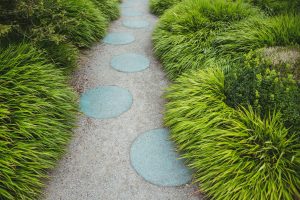 Introduction:
Introduction:
Today, we’re venturing into the world of turfgrass from the comfort of our own house – with a particular emphasis on its environmental impact. Turfgrass is more than just a pretty green carpet on our lawns; it’s a vital and varied player in our natural ecology. Understanding its relevance allows us to make informed judgments as we pursue environmentally-friendly gardening strategies.
The Basics of Turfgrass
Alright, before we get into the specifics of its environmental impact, let’s first have a solid understanding of what turfgrass is all about. Turfgrass is simply a blend of many grasses that join together to provide a lush, even ground cover. Turfgrass is frequently chosen by homeowners because it not only looks nice but also provides a soft and comfortable surface to walk on. Furthermore, it is quite flexible and can thrive in a variety of climates and soil conditions, making it a favorite choice for many people.
Turfgrass and Carbon Sequestration
One of the most significant environmental benefits of turfgrass is its remarkable capacity to capture and store carbon dioxide, a key greenhouse gas responsible for climate change. In essence, turfgrass acts as a natural carbon sink, helping to mitigate the effects of anthropogenic emissions.
Through a process known as photosynthesis, turfgrass absorbs carbon dioxide from the atmosphere and stores it in its extensive root system and the soil beneath. This crucial ecosystem service underscores the role of turfgrass in combating global warming.
Soil Health and Turfgrass
Turfgrass is a true ally when it comes to promoting soil health. Its deep-rooted system prevents soil erosion, enhances water infiltration, and improves overall soil structure. The healthy soil nurtured by turfgrass serves as a natural filtration system, effectively capturing and breaking down pollutants. Additionally, the root system of turfgrass helps prevent soil compaction, allowing for better aeration and nutrient absorption.
Biodiversity in Turfgrass Lawns
Contrary to the perception of sterile monoculture lawns, a well-maintained turfgrass lawn can indeed support biodiversity. While it may not match the diversity of a wild meadow, it provides habitat and sustenance for various insects, small mammals, and avian species. Homeowners can further enhance the ecological value of their lawns by incorporating native plants, reducing chemical inputs, and creating microhabitats like birdhouses and pollinator gardens.
Water Management and Turfgrass
Water conservation is of paramount importance, and responsible water management is vital in residential landscapes. Turfgrass can be water-efficient when managed correctly. We will delve into practical tips and strategies for optimizing water usage in your lawn.
Topics covered will include selecting the right grass species for your region, implementing efficient irrigation practices, and utilizing cutting-edge technology like smart sprinkler systems to minimize water waste.
Temperature Regulation
Turfgrass, in its vibrant green, reflects sunlight, curbing heat absorption. This natural cooling effect fights urban heat islands, making neighborhoods more comfortable in hot summers. Its ability to reduce temperatures is a welcome relief amid concrete and asphalt. By embracing turfgrass, we bring a touch of nature’s coolness to our surroundings, fostering a more pleasant urban environment.
Biodiversity Support
Promoting biodiversity in residential landscapes is essential for fostering a thriving ecosystem. Well-maintained lawns can serve as habitats for a diverse range of wildlife, including birds, insects, and small mammals. By planting native plant species, avoiding excessive pesticide use, and incorporating a variety of vegetation, homeowners can create a vibrant and balanced environment in their yards.
Trees and shrubs offer shelter and nesting sites for birds while flowering plants attract essential pollinators. Insects, in turn, become a vital part of the food chain, benefiting from the range of plant life. Small mammals like squirrels find sustenance and refuge within these green spaces. By nurturing biodiversity, homeowners not only contribute to a healthier environment but also enjoy the beauty of a self-sustaining ecosystem right outside their doorstep.
Challenges and Sustainable Solutions
Every landscaping choice comes with its unique set of challenges, and turfgrass is no exception. Issues such as excessive water consumption, chemical usage, and the prevalence of monoculture lawns have raised concerns.
However, these challenges are not insurmountable. In this section, we will explore eco-friendly alternatives and sustainable practices, such as low-maintenance grass varieties, organic lawn care techniques, and integrated pest management, that can address these concerns and promote a more eco-conscious approach to lawn care.
The Vital Role of Turfgrass Professionals
Turfgrass professionals are invaluable for creating biodiverse landscapes, guiding homeowners in plant selection, and sustainable lawn care, and addressing potential issues like invasive species. They offer expertise in enhancing the yard’s aesthetics while supporting wildlife.
Conclusion
In conclusion, turfgrass’s environmental impact on residential landscapes is profound and multifaceted. It serves as a critical carbon sink, enhances soil health, supports biodiversity, and can be managed sustainably with responsible practices. As homeowners, we have a significant role to play in making our lawns more environmentally friendly, and understanding the multifaceted benefits of turfgrass is the first step toward achieving that goal.
By appreciating the holistic value of turfgrass, we can make informed decisions that not only beautify our homes but also contribute to a greener, healthier planet. Whether you’re a seasoned gardening enthusiast or just beginning your landscaping journey, consider the environmental impact of turfgrass as you cultivate your green oasis.





